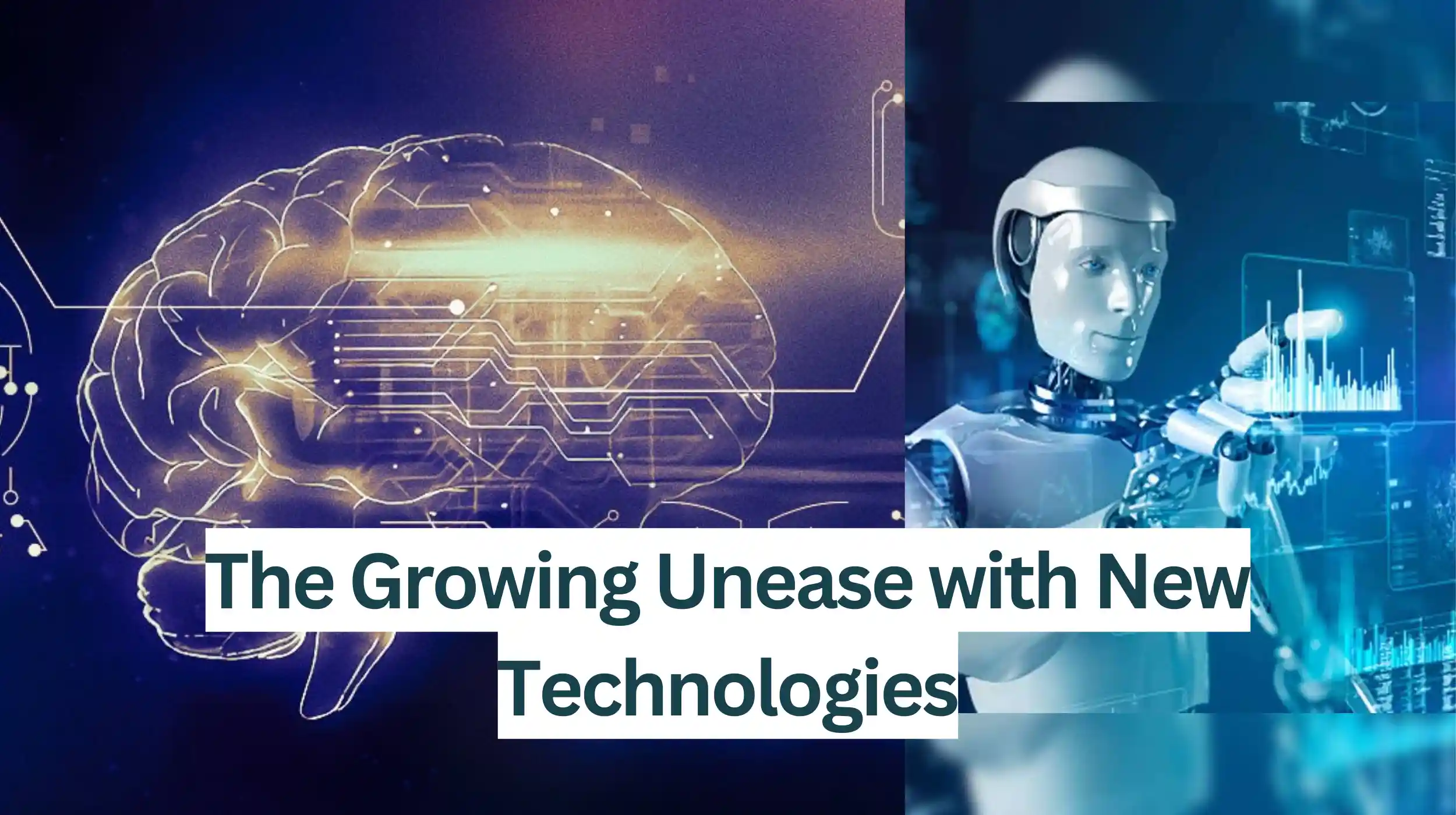Belgium (Brussels Morning) – Innovation has alternated between teamwork and individual genius, focusing on inputs and outputs rather than methods. We’re shifting from monetized attention to reality engineering, with cities being the first form of virtual reality. The rise of intellectual property and digital goods has commodified attention and led to new forms of reality manipulation. This has resulted in self-sufficient disintermediation and impaired reality testing through virtual and augmented realities. Future innovations will profoundly alter our lives and may lead to AI-driven virtual realities. True inventors are often misunderstood and face significant challenges. Innovation will increasingly become the domain of machines, potentially rendering humans obsolete in many fields. The relationship between humans and technology will continue to evolve, possibly leading to a symbiotic merger, while some will resist this integration.
Mankind has always alternated between teamwork and individual genius. It would behoove us to focus on the raw materials (inputs) and the outputs of innovation rather than on who and how we bring it about. We are transitioning from the age of monetized attention to the age of reality engineering. Cities amounted to the first make-believe, virtual reality. Urbanization and population growth led to the rise of the creative genius (auteur) and the emergence of the concept of the original, due to the need to be seen and noticed in the multitude.
From Teamwork to Genius, The Evolution of Innovation and Identity
Mankind have always alternated between teamwork and the individual genius. It would behoove us to focus on the raw materials (inputs) and the outputs of innovation rather than on who and how we bring it about. We are transitioning from the age of monetized attention to the age of reality engineering. Cities amounted to the first make-belief, virtual reality. Urbanization and population growth led to the rise of the creative genius (auteur), and the emergence of the concept of the original (due to the need to be seen and noticed in the multitude).
Intellectual property followed 300 years ago when mechanical reproduction blurred the line between original and copy and dramatically reduced the marginal cost of copies. The Work of Art in the Age of Mechanical Reproduction” (1935), by Walter Benjamin, is an essay of cultural criticism which proposes and explains that mechanical reproduction devalues the aura (uniqueness) of an objet d’art. Since then, identity has become a big business: patents, copyrights, brands, and blockchain NFTs. Distributed ledgers as well as centralised records vouch for one’s identity and guarantee it.
The Digital Shift from Tangibles to Reality Engineering and Virtual Worlds
The nonrivalrous zero marginal cost of digital goods has shifted the focus from manufacturing of tangibles to the manipulation of abstract symbols, the commodification of attention, and the emerging conundrum of discoverability. Both individual creators and commercial enterprises reacted by interpellating potential consumers via propaganda and targeted advertising and by turning a profit via the aggregation of big data (targeting the demographics of attention). These trends engendered self-sufficient disintermediated atomization – attention has been diverted to asocial online pursuits – and yielded an impaired reality testing (fantasy paracosms, virtual and augmented reality, and, soon, the metaverse).
The next frontiers are reality-like (pseudoreal) “real estate” and commodified but idiosyncratic menu-driven reality (the aforementioned metaverse). Collaborative virtual realities will supplant physical ones and reality substitutes (sex dolls, intimacy apps) will proliferate. Tech behemoths, such as Facebook, Google, Apple, and Amazon will try to control the way we perceive reality and the immersive universes that we inhabit.
The Impact of Truly Innovative Inventions
IRL AI will displace people as friends, advisors, interlocutors, lovers, and service providers. Users will construct online simulations and inhabit them. But this turn of events will also force the introduction of mandatory digital identities, hopefully based on blockchain rather than government regulation. Truly innovative inventions profoundly change the way we live, communicate, work, make love, and interact. By this standard, neither the automobile nor the smartphone are veritable innovations: the former is a mere mechanized horse and the latter a derivative of the phone. But Bell’s telephone and the telegraph are examples of paradigm-shifting, reality-altering inventions.
Most groundbreaking inventions generate their own markets, fostering needs in consumers that they were unaware of. They also recombine the familiar (e.g., previous technologies) in ways that produce alien, unprecedented, and strange products or services. Finally, true inventions become indispensable in short order: it is hard to imagine a life without them and we pity our predecessors for having been deprived of their existence.
Understanding Innovation and the Role of the Inventor
Schumpeter seemed to have captured the unsettling nature of innovation: unpredictable, unknown, unruly, troublesome, and ominous. Innovation often changes the inner dynamics of organizations and their internal power structure. It poses new demands on scarce resources. It provokes resistance and unrest. If mismanaged – it can spell doom rather than boom. Yet, the truth is that no one knows why people innovate.
The process of innovation has never been studied thoroughly – nor are the effects of innovation fully understood ever since the greatest invention of them all: the harnessing of fire, the ability to reignite it at will or maybe when a man (or a woman) picked up a stone and threw it at a scavenger. The typical inventor is solutions-oriented. S/he perceives a lack, deficiency, or lacuna and sets out to remedy it. Inventors are also possessed of a synoptic-panoramic view, able to discern the connective tissue that binds apparently disparate phenomena. Finally, a true inventor is able to transition seamlessly from the theoretical to practical, from the drawing board to testing, and thence to prototype.
Creative people are feared and hated, ostracized and punished, unless they are willing to clown themselves or dumb down and conform to the biases, prejudices, and errors of the masses. High IQ does not translate into success in the absence of perseverance, agreeableness, industriousness, stability (self-regulation), humility, a capacity for teamwork (minimal empathy and respect for others), robust mental health, a social support network, and luck. Many geniuses are homeless or incarcerated and all but forgotten.
The Complex Nature of Innovation
The reality testing of inventors is impaired: they perceive the world differently (possibly a sign of autism). Coupled with recklessness, a sense of fearless godlike immunity, it leads to exploratory behavior. Originality, novelty, difference: synoptic connectivity appears schizotypal or even psychotic (Schizotypy). Eysenck linked psychoticism to creativity. Indeed, the creative burst is often disorganized initially (inspiration, intuition, dreams). Attention multitasking generates unexpected insights and synergies. Impatience, grandiosity or contempt and condescension charcaterize inventors: convinced of their superiority, they tend to block out “noise” and ignore criticism. Lability and dysregulation are sources of inspiration. Proclivity for change, thrill-seeking, and risky conduct result in innovation.
These are the reasons that most innovators endure inordinate hardships in life, their resilience and perseverance tested to the breaking point. We tend to mythologize the process of invention, to render it mystical and uniquely human. The truth is that it is an emergent artefact (epiphenomenon), the ineluctable outcome of complexity. At this stage, we are feeding computer models with humungous reams of raw data in the hope that irreducible interactions between the umpteen pieces of information will yield innovative insights and discoveries.
The next phase will involve fine-tuning the inputs so as to allow artificial intelligence to work on its own and to seek data as well as outputs autonomously. At that stage, we would still be able to define the research agenda, but not for long. In due time, we will be rendered obsolete. We would still maintain a parasitic, atomized, technologically self-sufficient kind of existence for a while, but then, like everything superfluous in Nature, we will wane and fade away. Hence my prediction of a Luddite counter-revolution which would seek to physically demolish or ban certain technologies, maybe justly so.
The Future of Human-Machine Integration
The overwhelming vast majority of people are incapable of making use of the full set of features made available even by current technologies, let alone of innovating. I foresee “innovation engineers” whose job would be to cajole artificial intelligence codes and models into new discoveries. But innovation would become the domain of machines, not humans. I would be surprised if this would take longer than 50 years. With the exception of physical jobs like plumbing, AI would be perfectly capable of replacing and displacing us and doing a better job of it.
Technology fostered the delusion that every problem has a solution and the hubris that attends upon proving this contention somewhat true. We have learned to internalize technologies and render them our extensions, driving us deeper into fantastic paracosms, replete with populations of internal objects that represent cohorts of external devices and systems. We became dependent on technology and this dependency emerged as our default mode, leading us to prefer machines to other humans.
The “geniuses” who have created this new epoch are not representative of humanity, not even remotely. They are a self-selecting sample of schizoid, mostly white, mostly men. Crucial aspects of technology reflect the specific mental health pathologies, idiosyncrasies, and eccentricities, of engineers, coders, and entrepreneurs – rather than any aspect or dimension of being human. Still, some human activities and sectors will change only superficially.
War, for instance, is increasingly more democratized (terrorism and asymmetrical warfare, anyone?). It is also more remote controlled. But its main aim is still to kill people, combatants and civilians alike. Machines will never merely fight only other contraptions. War will never be reduced to a mechanized version of chess. Men, women, and children will always die in battle as conflict becomes ever more total. The repossession of resources requires the unmitigated annihilation of their erstwhile owners.
Wisdom, therefore, is in the eye of the beholder. There is no difference in the efficacy of deploying technologies between various societal organizational forms. All governments and collectives – autocratic, democratic, and theocratic, even ochlocratic or anarchic – leverage technology to secure and protect the regime and to buttress the narratives that motivate people to fight, work, consume, and mate.
Our ultimate symbiotic merger with machines will transpire sooner than we think. But there will always be a Resistance: a substantial portion of the population who will remain averse to cyborg integration and as the Luddites of yesteryear will seek to forbid such chimeras and destroy them. In some rudimentary ways, we are already integrated with machines. Can you imagine your life without your devices?
Human brains are ill-equipped to tell the difference between reality and mimicry, simulation, or fantasy. Technologies are the reifications of the latter at the expense of the former. One of the crucial aspects of the putative “Self” or “Ego’ is reality testing. As the boundaries blur, so will our selves. We are likely to acquire a hive mind, melded with all the technologies that surround us, seamlessly slipping in and out of dream states and metaverses. The “Self’ will become the functional equivalent of our attire: changeable, disposable, replaceable.
The Evolution of Human-Machine Symbiosis
As it is, I am an opponent of the counterfactual idea of the existence of some kernel, immutable core identity, self, or ego – see this video about IPAM, my Intrapsychic Activation Model. There have always been technologies for the masses as well as for niche users. Where we broke off with the past is in multitasking, the simultaneous suboptimal use of multiple devices. As they get more integrated by the day, the point is to empower, enhance, and expand both symbiotic partners: humans and machines alike. It is a virtuous cycle which will lead to functional specialization with both parties focused on what they do best.
Still, if humans fail to bake Asimov-like rules into their automata, the potential for conflict is there, as artificial intelligence become smore sentient and intelligent and prone to passing the Turing Test with flying colors. In short: indistinguishable from us, except with regards to its considerably more potent processing prowess. Popular culture reflected this uncanny valley: the growing unease with android robots, first postulated by Masahiro Mori, the Japanese roboticist, in 1970.
Dear reader,
Opinions expressed in the op-ed section are solely those of the individual author and do not represent the official stance of our newspaper. We believe in providing a platform for a wide range of voices and perspectives, even those that may challenge or differ from our own. We remain committed to providing our readers with high-quality, fair, and balanced journalism. Thank you for your continued support.



